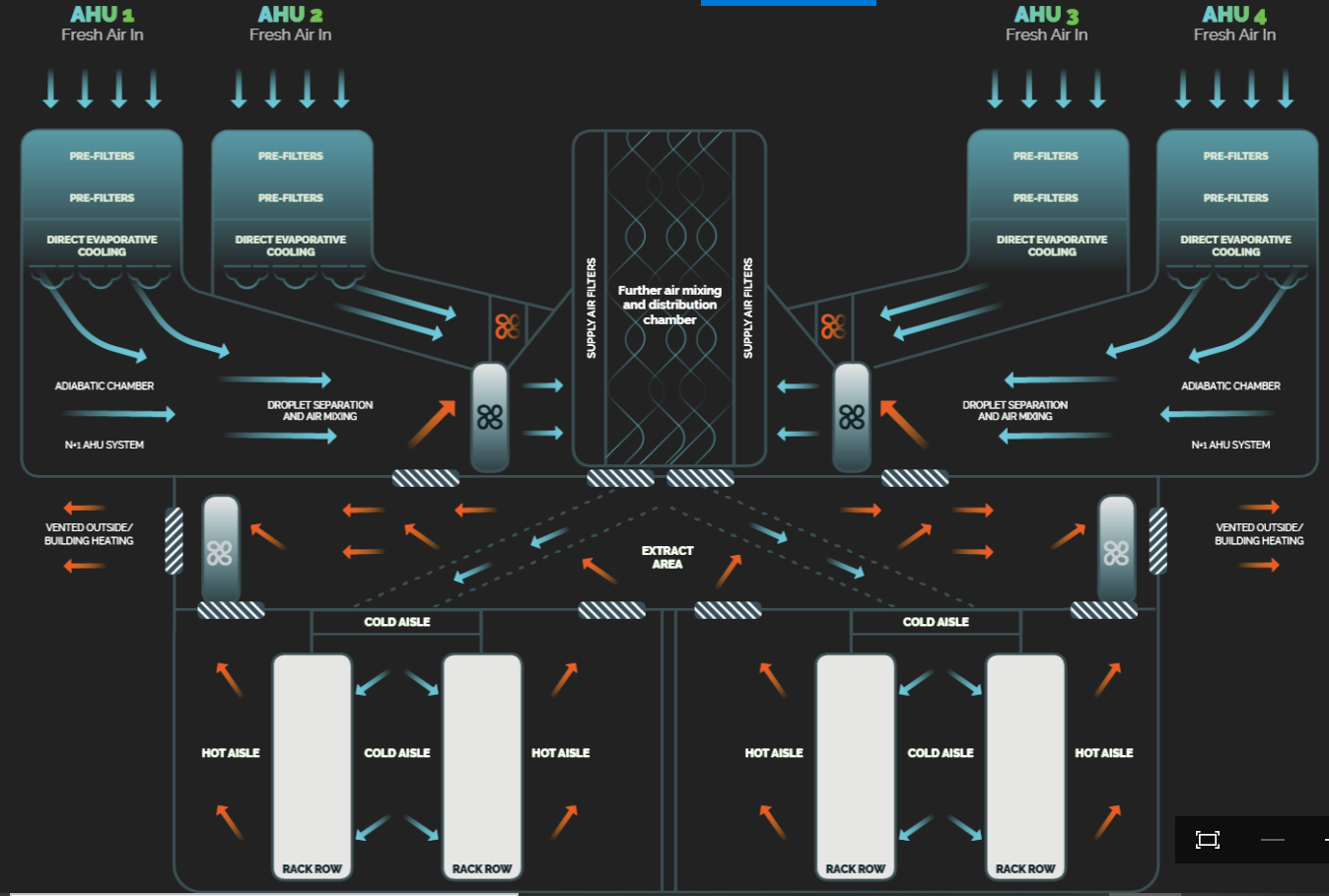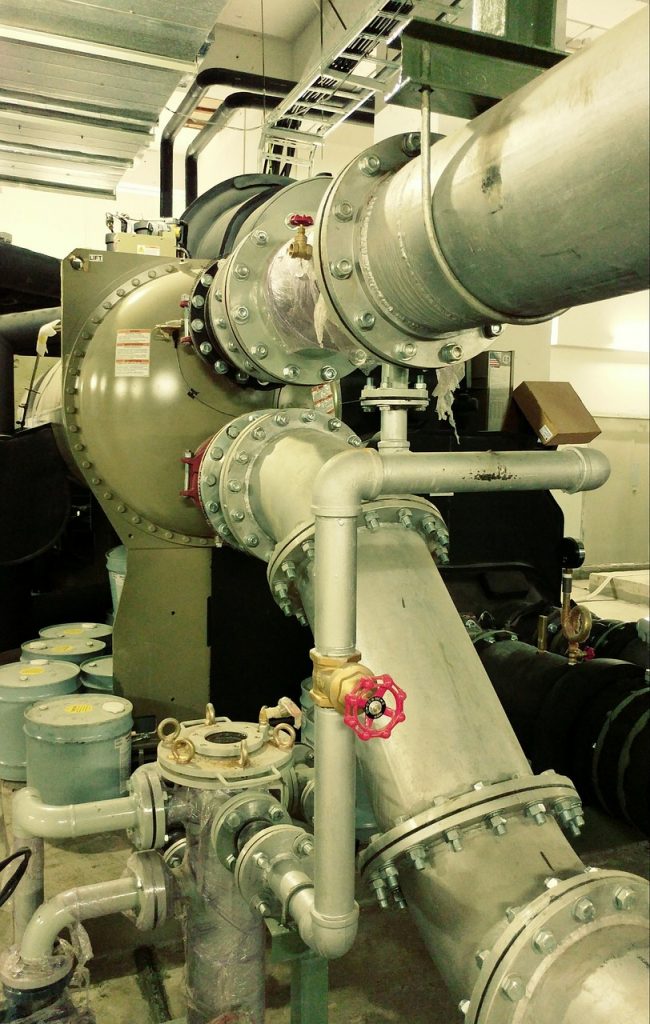The term ‘evaporative cooling’ describes a system that takes advantage of the reduction in temperature resulting from the evaporation of (in our case) water in to air…

For us as a data centre, it does several things. It gives us automatic inbuilt efficient humidity control during the winter season, which is where you get the real ESD (Electrostatic Discharge) issues. During summer you’ll be reasonably humid; very rarely will you have days where you look at the temperature charts and it’ll duck below 30 percent. Most of the time in the UK we sit in the 40-60 percent band and above during summer. Whereas in winter, you can get cold, dry days, where it’ll plummet to next to well under 20 percent once the air has been heated up from zero to the 21 supply required within the data floors.

The big thing is efficiency. Where you are choosing to use alternatives like fresh air for cooling (compared to DX), obviously it is ambient dependent. So, for example, if it’s 27 degrees outside, then that’s the temperature you are going to provide internally, plus you’re going to pick up a degree or two on the way in.
Yes, there is a direct correlation with adiabatic cooling and ambient temperature, but for us, the big thing is the lack of requirement for electrical transformer capacity. The liquid gold for any data centre is the transformer (and backup generator) capacity, which is a massively expensive resource. Especially when you consider that it could be unused for over 95 percent of the year.

When you are designing a system, you have many considerations but one of them is peak demand. It’s all very well talking about the efficiency of adiabatic vs the efficiency of a chiller, but from a systems design, you must understand what the peak requirements are.
So, for a 330kW chiller, you need somewhere in the region of 200 – 250 amps per phase reserved for its compressors and pumps. Now, unless you hit 37+ degrees ambient, you won’t hit the peak electrical demand from the chillers. Typically, in this area of the world, we spend 95 percent of our time below 21 degrees according to the MET Office.

No matter how the weather turns out, you still have to have all of the available amps required for max cooling in reserve. You can’t use an amp: it has to be ‘held to one side’. For adiabatic, the equivalent is probably maximum electrical requirement is 15 amps. So, your additional transformer capacity becomes available for IT load and you lose none of your cooling capacity.
Rowland Kinch is CEO, Custodian Data Centres, an award-winning UK data centre provider specialising in Colocation, Cloud and Connectivity services. With 100% up-time, 24/7 technical support and state of the art facilities we are here to push the boundaries of data centre technology and provide first-class customer service.

Custodiandc.com | 01622 230382 | info@custodiandc.com
